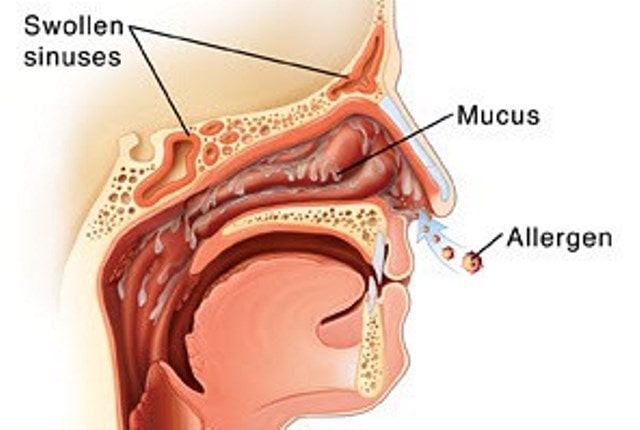Asians have a typically flatter and lower set nose. While this is generally accepted among most people of Asian descent, some people might feel dissatisfied with the look of their nose. For example, they might feel that their nose is too wide, too flat, or shapeless leading to low self-esteem and self-confidence. Luckily there are many Asian nose job surgeons who can help. Read on to find out more about Asian Nose job.
Asian Nose Bridge

The Asian nose bridge differs distinctly from those of their Caucasian counterparts in terms of the height of the bridge and the width of the nostrils as well as the tip of the nose.
This bridge often appears to “take shape” very low in the face making the Asian nose to appear a bit shortened. It also appears flatter. This is usually attributed to the fact that Asians tend to have a flatter midface (the facial region transcending from the lower eyelids to the upper lip) which means that the maxilla (the bone underlying the upper lip) supporting the nose is foreshortened.
Asian Nose Job
On the general scale people of Asian descent have thicker skin comprising of relatively higher number of sebaceous glands. The nasal cartilage is typically thin and weak which makes it less able to support the thicker (and heavier of course) skin. Consequently, Asians usually have a flatter, button nose which appears to be set relatively lower. The nostrils also often appear to be wide and flared.
Surgery is often used for Asian Nose jobs although non-surgical procedures can be performed on patients who qualify. A plastic surgeon will typically assess your case to see if you qualify for non-surgical rhinoplasty.

As opposed to the more western Caucasian nose job surgeries which in most cases aims at making the nose smaller, most (not all) such job surgeries aim at making the nose larger and have a more defined contour. While most thesejobs aim at greater height and vertical projection of the bridge in addition to better defined tips and nostrils, most western nose jobs aim at less defined tips and reduced height and width of the nose bridge.
This is however a general outlook as personal perceptions and aesthetic preferences will essentially vary from one person to the other. Furthermore, not all Asian noses are exactly the same. There are of course certain shared traits such as the flatter appearance, but Asians from the Southeast Asia will have subtle nasal differences from those from those of Eastern Asia descent.
For instance, southeastern Asians (from countries like Cambodia, Malaysia, Thailand, Philippines, Burma and Vietnam) typically have wider, flaring nostrils while those from Eastern Asia (countries like Japan, China, and Korea) usually have narrower nostrils that often need little or no narrowing at all.
There are many well known plastic surgeons, but going to a surgeon specializing in Asian cosmetic surgeries can make things a whole lot easier. This is because they will most likely have a clue of what most Asians desires and will help you make quicker decision.
Since this nose types typically have lower nasal bridges it is to be expected that an such a job will involve the use of implants to raise the height and increase the length of the bridge. A cartilage from the patient can be used but if the surgeons so decides, an advanced composite implant can as well be used. The patient may also decide not to use cartilage from his own body.
Asian Nose Surgery
Asian nose surgery has a long history. It has been widely documented in several Asia languages.

Most Asian go for a rhinoplasty surgery to balance their look or to get rid of some Asian qualities that they don’t like on their face. For instance, since most Asian have shorter noses with relatively wider nostrils, a nose job surgery can be done to increase the length of the nose a bit and make it more defined. This can bring balance to the face and make the person feel more confident about his/her looks.
Most patients usually recover from nose surgery rather quickly. Within week, most of them will be able to go back to school or work. Since most Asian nose surgeries will involve using an implant, it is generally advised for patients to stay away from sporting activities that may lead to accidental damage to the implant e.g. football for at least six weeks.
It is generally expected for Asians to desire a more projecting, thinner nose bridge, a more projected tip, narrower nostrils, and a more triangular base of the nose. These are some of the qualities that inform the “before and after Asian nose surgery” perception of such patients.
Some patients might experience undesirable effects such as eschewed nasal shapes and small bumps. The latter are usually caused by swelling of the nasal tissues and typically clears off after some time. If need be, revisions are often done. This is often done if the nose job surgery didn’t achieve the patient’s desired outcomes.
Asian Nose Job Before And After

Asian nose job typically involves aesthetic reconstruction and enhancement of the nose to match the desired goals of the patients. Some subtle differences should be seen before and after the procedure. To give you an idea, here are a few before and after photos of people with an Asian descent people who have undergone a nose job:
Before going for it this Asian lady had a wide, flat nose that was set rather lower as can be seen from the first photo. After rhinoplasty, the nose appears narrower. The nose bridge has also been raised to make the bridge more defined, essentially making it appear longer. The tip of the nose is also smaller after the procedure.
As we have mentioned, an Asian nose is typically low set, small and flat. But if you don’t like the appearance of such a nose, you can always go for an Asian rhinoplasty. Getting a nose-lift can not only make your face more balanced but also help you get more self-confidence and boost your self-esteem.



Apart from restructuring the nose, rhinoplasty could also help in eliminating dark spots and moles from
your nose thus creating a smooth look. In Los Angeles, rhinoplasty surgeons undergo meticulous scholastic and practical training.
Most people who undergo the surgery are delighted with all the results and acquire a huge boost on their self-image.